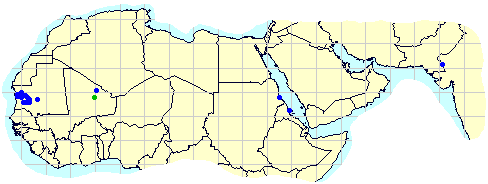4 December 2002. Small scale breeding in Mauritania, Mali, Niger and Yemen
The Desert Locust situation is calm in all countries. Despite small-scale breeding in western Mauritania, northern Mali, Niger and southern Yemen, locust numbers remained below threatening levels and limited control operations were only required in Niger. Nevertheless, locusts will persist and breeding will continue in Mauritania and Mali if additional rains fall. Scattered adults are present on the Red Sea coastal plains of Sudan where breeding will occur in the coming weeks due to unusually heavy and widespread rains that fell several times in November. Small-scale breeding is also likely on the Red Sea coasts of Saudi Arabia and Yemen. Elsewhere, a few adults were seen in southern Algeria, probably originating from northern Mali.
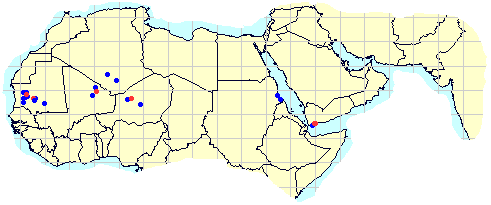
7 November 2002. Small scale breeding continues in Mauritania and Yemen
The Desert Locust situation is calm in all countries. Control operations in late October treated 200 ha of hopper and adults groups near Aden, Yemen. Surveys carried out after the control found only low numbers of hoppers and adults in a few places. As vegetation dries out, the adults will move to the Yemeni Red Sea coast where breeding conditions are already favourable. Small-scale breeding is in progress in northwest Mauritania. Scattered adults are present in northern Mali and some of these may move north into southern Algeria where unusually heavy rains fell last month. Elsewhere the situation is calm and no significant developments are expected in the coming weeks.
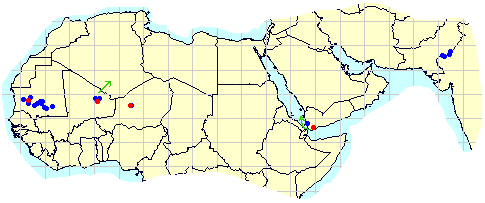
3 October 2002. Small scale breeding in West Africa and Yemen
The Desert Locust situation is calm in all countries. Despite good rainfall and ecological conditions in all summer breeding areas except along the Indo-Pakistan border, only limited breeding has been detected so far in southern Mauritania and western Niger where low numbers of solitarious hoppers and adults are present. In Yemen, localized breeding on the coast near Aden within an area of about 20 sq. km has resulted in the formation of small groups of hoppers and adults. Breeding is still in progress there and the situation is being carefully monitored. Elsewhere, insignificant numbers of locusts were reported in northern Mali and Rajasthan, India, and surveys were in progress in Sudan. Unusually heavy rains along the Red Sea coastal plains of Yemen, southern Saudi Arabia and southern Eritrea will allow small-scale breeding to start if locusts appear in these areas.
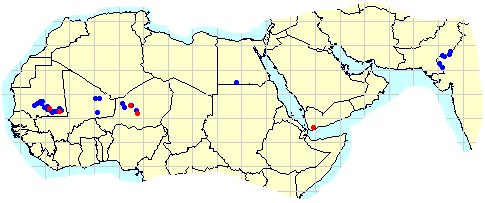
6 September 2002. Calm locust situation prevails
The Desert Locust situation is calm in all countries. Despite good rainfall and ecological conditions in all summer breeding areas except along the Indo-Pakistan border, no breeding has been reported yet. Only low numbers of adults are present in southern Mauritania and eastern Pakistan. A few locusts were seen in northern Niger and southern Yemen. In the coming weeks, small-scale breeding is expected in all of these countries, except Pakistan, as well as in northern Mali and in Sudan. Unusually good rains fell along the southeastern coast of the Red Sea which may allow breeding to commence in Yemen and adjacent areas in Saudi Arabia. No significant developments are expected.
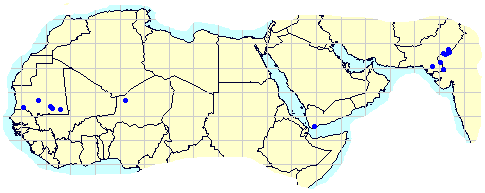
1 August 2002. Calm locust situation continues
The Desert Locust situation remains calm in all countries. No locusts have been reported in West Africa due to poor and erratic rainfall although scattered adults are likely to be present and breeding on a small-scale in areas of recent rainfall in northern Mali, southeastern Mauritania and Tamesna, Niger. Isolated adults are present in the summer breeding areas of Sudan where good rains have fallen and small-scale breeding is expected. Isolated adults were also seen in the Yemen interior. Only a few locusts are present along both sides of the Indo--Pakistan border due to poor monsoon rainfall so far in the summer breeding areas. Even if good rains occur in the breeding areas, locust numbers will remain below threatening levels and no significant developments are expected in the coming weeks.
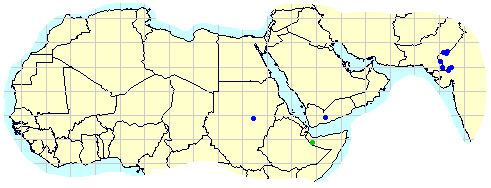
3 July 2002. Calm locust situation prevails
The Desert Locust situation is calm in all affected countries. Limited control was undertaken in a few places in Morocco near the Algerian border in late June against hoppers and young adults. Isolated adults were reported from one location on the Red Sea coastal plains in Saudi Arabia and in Pakistan near the Indian border. Although rains have started in the summer breeding areas in the Sahel in West Africa and Sudan and along the Indo-Pakistan border, additional rains are required before breeding is likely to commence. No significant developments are expected in the coming weeks.
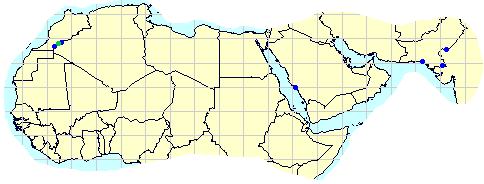
3 June 2002. Calm locust situation despite heavy rains in Oman
The Desert Locust situation continues to be calm in all countries. Only isolated solitarious adults are present in western Pakistan. Heavy rains and flooding associated with a tropical depression occurred in mid-May in southern Oman but no locusts have been reported so far. There were unconfirmed reports of a few small swarms in northern Mali in early April but these are probably Tree Locust mixed with a few Desert Locust. Small-scale breeding will commence in the Sahel of West Africa and Sudan with the onset of the summer rains. No significant developments are expected.
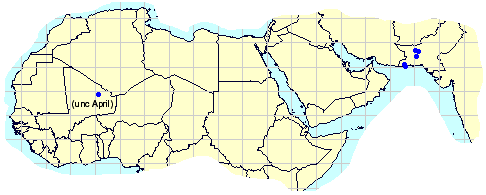
3 May 2002. Unusual rains over southern and eastern Saudi Arabia but calm locust situation persists
The Desert Locust situation continues to be calm in all countries. Only isolated solitarious adults have been reported in Niger and small-scale breeding has occurred in western Pakistan. Unusual rains fell for the second month in a row over southern and eastern Saudi Arabia. Winds associated with the storms may have carried low numbers of adults into the interior of Yemen where breeding conditions will improve in the coming weeks. No significant developments are expected

3 April 2002. Calm situation continues; eastern Arabia rains
The Desert Locust situation continues to be calm in all countries. Only isolated and insignificant numbers of solitarious adults have been reported in western Mauritania, Morocco, Niger, in the Tokar Delta on the Red Sea coast in Sudan, and in western Pakistan. Conditions are dry except for western Mauritania and in parts of western Pakistan. Small-scale breeding could occur in these areas causing locust numbers to increase slightly but remain well below threatening levels. Unusually widepsread rains fell over the eastern Arabian Peninsula. No significant developments are expected
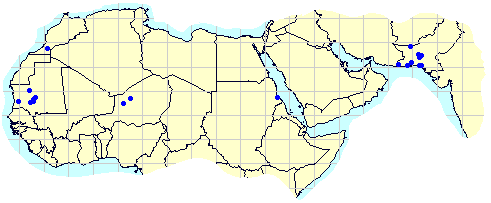
4 March 2002. Calm situation prevails
The Desert Locust situation continues to be calm. Only isolated adults have been reported in northwestern Mauritania, northern Mali and Niger, in the Tokar Delta on the Red Sea coast in Sudan, and in western Pakistan. Small-scale breeding was reported on the northern coast of Eritrea in February and is likely to occur in western Mauritania (where unusually heavy rains fell in January) and in western Pakistan during the coming month. Nevertheless, locust numbers are likely to remain well below threatening levels and no significant developments are expected
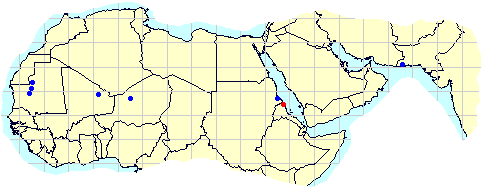
5 February. Unprecedented rains in Mauritania
Although the Desert Locust situation continues to remain calm, there were extremely unusual and heavy rains over western Mauritania where locusts have been reported. These rains could allow locusts to breed and increase in number. Elsewhere, locusts are reported in northern Mali. Only a few adults are present on the Red Sea coast in Eritrea and in Tokar Delta, Sudan because of poor rainfall. Conditions are favourable on the coasts of Yemen and Saudi Arabia but no locusts have been reported. Rains have started in the spring breeding areas of western Pakistan. No significant developments are expected in the coming weeks.
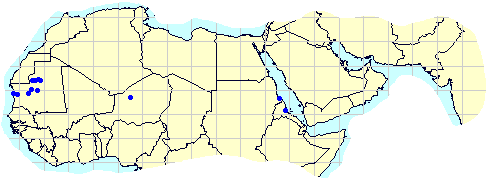
9 January. Limited potential for winter breeding
The Desert Locust situation continues to remain calm. Low numbers of adults are present in northwestern Mauritania, northern Mali and in Tokar Delta, Sudan. Poor rainfall in the winter breeding areas of NW Africa and along the Red Sea coast will limit breeding to just a few areas: Tokar Delta and nearby coast in Sudan, and parts of the Red Sea coast of Yemen and Saudi Arabia. No significant developments are expected in the coming weeks.
